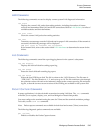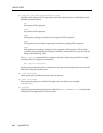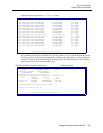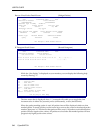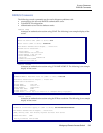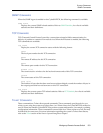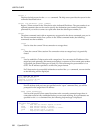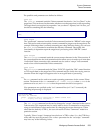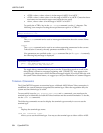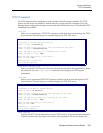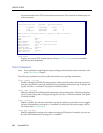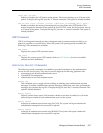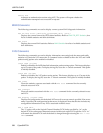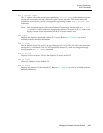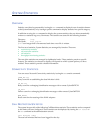
Workgroup Remote Access Switch 553
S
YSTEM
C
OMMANDS
Telnet Commands
The possible send parameters are defined as follows:
send ayt
The
send ayt
command sends the Telnet command function for “Are You There?” to the
target host. This can be used to determine whether or not the target host is still responding.
The target host is not required to respond to “are you there?" requests, but if it does, you
should see something like the following:
send break
The “send break” command sends the Telnet command function for “BREAK” to the target
host. This can be used to interrupt the current command in progress on the target host. For
example: If the target host is currently streaming out a large directory listing, you can issue
the
send break
command to terminate the directory command. Once again, this
functionality is dependent upon the target host’s processing of the “BREAK” control
function.
send escape
The
send escape
command sends the current escape character for the Telnet session. If
the connection between the local terminal and the remote server is made up of more than
1 individual Telnet connection, this command may be used to “escape” into command
mode of one of the intermediate Telnet connections.
send synch
The
send synch
command sends the Telnet “SYNCH” signal (the “DM” control function
as TCP urgent data) to the target host. This command may be useful when trying correct a
situation where the target host appears to be in an atypical state of processing.
set
The
set
command can be used to set certain operating parameters for the current Telnet
session. The format of the
set
command is
set <name>
<value>
; where <
name
> is the
parameter to be set, and <
value
> is what the parameter should be set equal to.
If no parameters are specified on the “set” command line (or if “set?” is entered), the
following help message is displayed:
The
set escape
command can be used to change the “escape” character for the current
Telnet session. This command may be useful when a device is connected to a target host,
using several different Telnet connections. By changing the escape character to a value
other than the default (<CTRL>), the user can return to Telnet “command” mode for a
particular session.
Typically, Telnet “escape” characters have the form ‘<CTRL><char>‘ (i.e., the CTRL key +
some other key must be pressed). The <value> parameter for the “set escape” command
may have any of the following values:
[System Name]>
send ayt
[Yes]
[System Name]>
set
Available set commands:
escape - Character used to escape back to TELNET command mode.
? - Display this help information.



